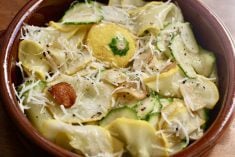My dad, Gilbert Pearson, has often stated that “the anticipation of a holiday is greater than the realization.”
This is not to say that the holiday is never as good as you expect, but rather the anticipation and planning can be almost as much fun as the event. It doesn’t matter how much planning you put in, sometimes the holiday may not always go as planned. This may not always be bad though. For example this summer, we hit a deer the day before leaving for Alberta so we changed our plans and stayed close to home, doing some smaller side trips. The chance to be at home for part of our vacation resulted in a relaxing leisurely holiday with time for some yard work. Our anticipation of visiting with friends and attending the Stampede were definitely greater, as the plans were never realized. Oh, well, maybe next year.
Read Also

Farm auctions evolve with the times
Times have changed. The number of live, on-farm auctions is seeing a drastic decline in recent years. Today’s younger farmers may actually never experience going to one.
This summer, we also learned some lessons about boat towing safety. We were thankful for the two safety chains on our boat trailer when the trailer hitch came off the ball. Fortunately, there was no damage done. There were a few tense moments though when we saw the trailer and boat bouncing from side to side behind us.
Some friends had a disaster when their boat caught on fire while they were driving down the highway. They concluded the combination of a very hot day, bumpy road, tightly covered boat, gas fumes and a spark from the boat battery caused the fire.
The lessons we have learned are to always cross the safety chains and do them up, disconnect the battery and on hot days loosen the tarp over the boat to let out the gas fumes. When we reflect back on our holidays, I hope we will remember the good times we spent together, relaxing, reading, catching some fish and late night campfire discussions with our children.
Cookbook search
Dear TEAM: Could you please tell me where a person can purchase a copy of the cookbook Make-A-Mix Cookery? I’d also like the name of other cookbooks that have mixes you make ahead. – J.T., Albertville, Sask.
Dear J.T.: I have a copy of the book you are looking for. It has been one of my favorites for years. It contains many recipes for making your own mixes from scratch. The one I use most often is the Quick Mix. It can be used to make pancakes, short cakes, muffins, pizza dough, biscuits, coffee cakes and impossible pies.
The book contains recipes for granola, basic cookie, pie crust, meat sauce, chicken, garden vegetable and spice mixes. Similar mixes can be purchased, but the advantage of home-made mixes is they are less costly, you know what is in them, they save mixing time and you can adapt them to your family’s personal preferences.
The book that I have has been updated and expanded in a 1995 edition. Some additions include a ground beef mix, cubed pork mix and bean mixes. Make-A-Mix Cookery by Karine Eliason, Nevada Harward and Madeline Westover is available at Coles bookstores.
I am not aware of another book solely covering master mixes, but many cookbooks contain sections or individual recipes.
Rhubarb juice
Dear TEAM: I’m visiting my daughter and she has a lot of rhubarb. I would like to make it into juice. Do you have a recipe for rhubarb juice? I am also looking for Five Roses Flour Cookbooks from the early 1900s. One has a brown cover the other a red cover. – M.S., Saskatoon, Sask.
Dear M.S: I have a 1915 edition that has no cover left, but may have been brown and a 1935, red cover, edition. Both were my nanny’s (paternal grandmother) books and I still use them occasionally.
I do not want to sell mine but there may be others who would like to sell their copies.
Rhubarb juice is a great way to use up a bountiful supply of rhubarb.
Rhubarb punch
4 cups rhubarb (cut 1 L up)
4 cups water 1 L
Cook until very soft and strain through a sieve.
Add:
3Ú4 cup sugar 175 mL
Bring to a boil and add:
1Ú2 cup orange juice 125 mL
1Ú3 cup lemon juice 75 mL
1Ú8 teaspoon salt 0.5 mL
Chill. Mix with equal quantity (or more) of soda or ginger ale.
A song memory
Dear TEAM: I, too, was interested in the song Come Little Leaves. My mother, who was born in 1895 in Minnesota, learned that song in school. She taught it to us when we were young. My mother passed away recently, at the age of 100 years plus. Her mind was still quite alert. Just yesterday I came across a poem she’d learned in school, that she had written out by memory. “A fair little girl sat under a tree, sewing as long as her eyes could see. Then she smoothed her work, and folded it right and said, ‘dear work, good nigh, good night.’ She did not say to the sun, ‘Good-night.’ ” Does anyone remember it? – “Lili bit,” Manitoba.
Fruit ripening
To get the best flavor from tree fruits they must be handled and stored carefully.
Tree fruits such as peaches, plums and nectarines will deliver their full load of juiciness and flavor when fully ripe. Ripe fruit will yield to gentle pressure. If fruit is not ripe, it must be stored at a temperature that will promote ripening.
Refrigerator temperature (2 to 6 C) is considered the “killer zone” as it causes the pulp of the fruit to break down. Fruit becomes dry and mealy.
Sound familiar? Reach for the optimum ripening temperature by storing unripe tree fruits in a loosely closed paper bag at a temperature as close as possible to room temperature, about 20 C.
A higher temperature, above 24 C, will also result in a mealy flesh and poor flavor.
Yogurt cheese dip
This yogurt cheese dip makes a nice addition to a fresh fruit platter.
4 ounces cream 125 g
cheese
1Ú4 cup sugar 50 mL
1Ú2 teaspoon vanilla 2 mL
1 egg beaten 1
1Ú2 cup plain yogurt 125 mL
Beat cheese until fluffy. Add sugar, vanilla and egg. Fold in yogurt. Chill. Makes about 1 1Ú4 cups (300 mL).
Swiss chard
Swiss chard, a cousin of the beet, originated in the Mediterranean.
Its stem, either white or scarlet, has a subtle celery-like taste and the wide leaves have a mild flavor of spinach and beet.
Substitute tender chard leaves for cooked spinach in most recipes.
To serve as a side dish vegetable, separate the stalks from the leaves. Steam or boil stems two to three minutes. Add the leaves when the stalks are nearly done or cook them separately one to two minutes.
I often use the stalks in place of celery in stir fries. If the leaves are large enough, stuff them with a meat, rice and vegetable mixture. One cup (250 mL) of shredded raw Swiss chard is a source of vitamin C, vitamin A and magnesium.
Cutting back waste
To reduce waste, eat food products lower down on the food chain. Peas, beans, lentils and grains require limited processing, have little waste and are highly recommended in Canada’s Guide for Healthy Eating.
The guide recommends we eat five to 12 servings each day of grain products, and often select dried peas, beans or lentils as low-fat alternatives to meats.
The following recipe is from Discover the Pulse Potential, by the Saskatchewan Pulse Crop Development Board.
Bean and barley salad
Remember to wear rubber gloves when handling jalapeno peppers.
3 cups water 750 mL
1Ú2 cup pearl barley 125 mL
1 can (19 oz.) 540 mL
chickpeas, rinsed and drained
1 cup cooked Pink 250 mL
beans
1 cup cooked Great 250 mL
Northern beans
1Ú4 cup chopped green 50 mL
onion
1Ú4 cup chopped fresh 50 mL
parsley
2 jalapeno peppers, 2
chopped
Red wine dressing:
1Ú3 cup red wine 75 mL
vinegar
1 teaspoon salt 5 mL
1Ú2 teaspoon ground 2 mL
black pepper
1Ú2 teaspoon cumin 2 mL
1 garlic glove, 1
minced
1Ú3 cup canola oil 75 mL
In saucepan, bring water to boil. Reduce heat and add barley. Cook, covered, 40 minutes or until tender-firm. Remove from heat. Drain. Rinse with cold water. Drain again.
In a serving bowl, combine barley, chickpeas, beans, onion, parsley and peppers.
In a separate bowl, combine vinegar, salt, pepper, cumin and garlic. Whisk in oil until evenly mixed. Add to bean mixture. Toss gently.
Serve immediately at room temperature. (May be stored in a covered container in refrigerator 24 hours.) 10 servings; 179 calories each.
Funding ideas needed
TEAM: Our church group is making pot holders as a fund raiser. We are looking for new ideas that may include sewing, crocheting, or knitting projects. – E.M., Oakville, Man.
Dear readers:
What are some successful fund raisers held in your group or community? Please write.














